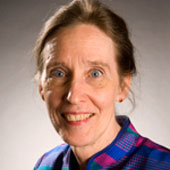The Three Indias
Can India’s population be divided into those reaping the benefits of globalization — and those left behind?
June 2, 2008
Looking up and down the income scale, there are “three Indias.” The India that is in the global headlines consists primarily of people and enterprises that form part of the most advanced India, what some observers have called “airplane India.”
The go-go IT sector, globalized industries, the internationally integrated R&D establishment, the upper class and upper middle class families who almost without exception have members who either live in the West or have received part of their education there — these are, collectively, the engine of India’s technology-driven growth.
They have generated much of the dynamic growth of the past 15 years — they are pushing government policy forward — they are measuring India against a global standard, and doing their best to ensure that it can compete in the big leagues.
Side by side with “airplane India,” however, are two others. Middle-class India — “scooter India,” to continue the transportation analogy — captures perhaps 250 million Indians. Many of these people have benefited from India’s greater prosperity and have eagerly sought jobs in the emerging tech sector.
If India continues its rapid growth, as most observers expect it to at least for the next several years, “scooter India” will provide much of the fuel for that growth.
This group’s education will increase, its earning power will grow, its eagerness for jobs in manufacturing and in the globalized sector will intensify — and perhaps more importantly, its numbers will rise.
This group is already educated at least through the primary level. The challenge will be to make secondary education universal in this group, and to make universities and advanced training institutions increasingly accessible to it.
It is the third India, “bullock cart India,” that represents the most serious potential drag on India’s rise. Much of this group depends on agriculture for all or most of its livelihood. Agriculture has lagged behind industry and services in this recent time of prosperity.
Even taking into account increasing urbanization, agricultural livelihoods have grown more slowly than the national norm. Literacy has increased in the rural areas, but village India has modernized slowly.
Prosperity depends on the weather — individuals feel very dependent on patronage and on government programs for benefits that may make life a bit better, and old social relationships die hard.
Even more politically salient are the geographic inequalities that go along with this three-part social division. Per capita income in Maharashtra, which boasts the highest per capita GDP among India’s large states, is close to five times the average income in Bihar, the state that consistently appears at the bottom of the charts.
In parts of India where growth has been high, villages have been pulled along in its slipstream. But in several of the country’s largest states, a pattern of low growth, lagging human development and weak literacy is intertwined with corrupt and patronage-ridden governance.
India can continue its growth for some time despite these inequalities, but at some point village poverty and especially the poverty of some of the country’s largest states will drag it down.
India’s political leaders are well aware of this — and respond with populist policies, including the Congress Party-led government’s program for guaranteed work income for rural families. India’s government needs to meet two difficult challenges in order to continue the country’s astonishing economic transformation over the long term.
It needs to find an effective way of pushing some of the growth down to the grass roots. It also needs to make its combination of policies attractive enough to be voted back into office.
The Indian political system is hard on incumbents. In 2004, the winning Congress Party actually lost vote share — and of the 98 members it had had in the outgoing parliament, only half were reelected. This is the policy dilemma that each future government in turn will have to confront.
Editor’s Note: This in an excerpt adapted from Ernest Preeg’s book, “India and China.” Printed by the permission of the author and publisher.
Takeaways
It is the third India, "bullock cart India," that represents the most serious potential drag on India's rise.
Much of "scooter India" has benefited from India's greater prosperity, and have eagerly sought jobs in the emerging tech sector.
Middle-class India, called "scooter India," captures perhaps 250 million Indians.
Read previous
The Rise of the New Mercantilism (Part II)
May 30, 2008
